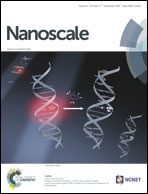Oxygen vacancy effects on an amorphous-TaOx-based resistance switch: a first principles study
Abstract
Amorphous TaOx (a-TaOx) based resistance switches have recently demonstrated outstanding performance and are being considered as one of the most promising candidates for next-generation memory cells. However, the origin of the switching mechanism is still under debate, especially on the component of the conduction filament (CF). Since the resistance change of a-TaOx is controlled by the O concentration, we perform a systematic investigation on the evolution of structures and electronic properties of a-TaOx (0.75 ≤ x ≤ 2.85) from first principles. Our results reveal the strong correlation among Ta/O coordination numbers, Ta–Ta/Ta–O bond lengths, and O concentrations in a-TaOx. For a single O vacancy in a-TaO2.5, the Ta–Ta dimer structure is found to be the most stable, and the energy position of its defect state agrees well with experiments. With the decrease of O concentration, Ta atoms tend to merge together and finally form a continuous Ta-rich region in a-TaO0.75, which suggests that not O vacancies, but the Ta–Ta bonding mainly contributes to the CF in a-TaOx based resistance switches. Our molecular dynamics simulation suggests that in the CF, Ta atoms prefer to arrange in a layer structure, and hence the phase transformation to crystalline α-Ta with interstitial O atoms is proposed. In addition, the calculations on Pt/a-TaOx/Pt heterostructures further confirm the conductive nature of the Ta–Ta bonding in a-TaOx, and also reveal the different conduction types in switching on (metallic contact) and off (electron hopping) states.


 Please wait while we load your content...
Please wait while we load your content...